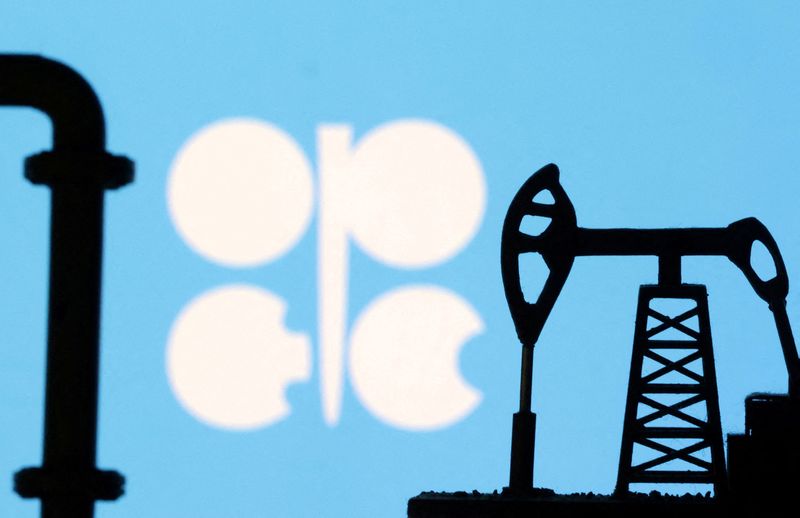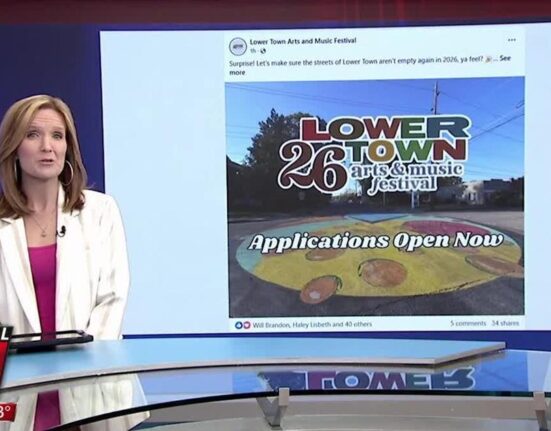By Seher Dareen and Ahmad Ghaddar
LONDON (Reuters) -OPEC+ has delivered about three quarters of the extra oil output it targeted since the group started production hikes in April, and the level may fall closer to half later in the year as producers hit capacity limits, sources and analysts said and data showed.
Invest in Gold
OPEC+, which produces 50% of global oil and brings together the Organization of the Petroleum Exporting Countries and allies such as Russia, has been pumping almost 500,000 barrels per day below its targets. The shortfall, equal to 0.5% of global demand, has defied market expectations of a supply glut and supported oil prices.
Eight members of OPEC+ that introduced voluntary oil output cuts in April 2023 to support the market began raising output this April. OPEC+ total reductions – voluntary and for the whole group – amounted at their peak to 5.85 million bpd in three different layers.
The eight plan to fully unwind their most recent round of cuts – 2.2 million bpd – by the end of September and start removing a second layer of 1.65 million bpd in October. OPEC+ gave the United Arab Emirates approval to boost production by 0.3 million bpd between April and September.
ALMOST 500,000 BARRELS PER DAY BELOW TARGET
Between April and August, OPEC+ delivered only 75% of production increases, according to a Reuters analysis of OPEC+ data, producing almost 500,000 bpd below the targeted increase of 1.92 million bpd for that period.
Data beyond August is not yet available.
This shortfall has helped to keep Brent crude prices near a seven-week high of $69 per barrel. OPEC+’s constraints are one factor supporting prices, analysts at Barclays and Kpler said this month.
Analysts have yet to revise oil price forecasts.
Brent’s immediate delivery price rose this week to a $2.39 premium over six-month futures, the highest since early August, indicating a perception that immediate supplies are limited.
“The futures curve… is indicating market tightness, which is in contrast to observers claiming there’s a glut,” said Giovanni Staunovo of UBS, who is sticking with his latest price forecasts.
MOST CANNOT PUMP MORE
Two main factors explain the shortfall. Firstly, OPEC+ told members including Kazakhstan and Iraq to make extra cuts, called compensation cuts, for previously exceeding agreed levels.
Secondly, the group faces dwindling spare production capacity – idle output that could quickly come online – after years of low investment, said OPEC+ sources, industry executives and analysts.
One OPEC+ delegate, who declined to be named because of the sensitivity of the matter, said most member countries cannot produce more.
By Seher Dareen and Ahmad Ghaddar
LONDON (Reuters) -OPEC+ has delivered about three quarters of the extra oil output it targeted since the group started production hikes in April, and the level may fall closer to half later in the year as producers hit capacity limits, sources and analysts said and data showed.
Invest in Gold
OPEC+, which produces 50% of global oil and brings together the Organization of the Petroleum Exporting Countries and allies such as Russia, has been pumping almost 500,000 barrels per day below its targets. The shortfall, equal to 0.5% of global demand, has defied market expectations of a supply glut and supported oil prices.
Eight members of OPEC+ that introduced voluntary oil output cuts in April 2023 to support the market began raising output this April. OPEC+ total reductions – voluntary and for the whole group – amounted at their peak to 5.85 million bpd in three different layers.
The eight plan to fully unwind their most recent round of cuts – 2.2 million bpd – by the end of September and start removing a second layer of 1.65 million bpd in October. OPEC+ gave the United Arab Emirates approval to boost production by 0.3 million bpd between April and September.
ALMOST 500,000 BARRELS PER DAY BELOW TARGET
Between April and August, OPEC+ delivered only 75% of production increases, according to a Reuters analysis of OPEC+ data, producing almost 500,000 bpd below the targeted increase of 1.92 million bpd for that period.
Data beyond August is not yet available.
This shortfall has helped to keep Brent crude prices near a seven-week high of $69 per barrel. OPEC+’s constraints are one factor supporting prices, analysts at Barclays and Kpler said this month.
Analysts have yet to revise oil price forecasts.
Brent’s immediate delivery price rose this week to a $2.39 premium over six-month futures, the highest since early August, indicating a perception that immediate supplies are limited.
“The futures curve… is indicating market tightness, which is in contrast to observers claiming there’s a glut,” said Giovanni Staunovo of UBS, who is sticking with his latest price forecasts.
MOST CANNOT PUMP MORE
Two main factors explain the shortfall. Firstly, OPEC+ told members including Kazakhstan and Iraq to make extra cuts, called compensation cuts, for previously exceeding agreed levels.
Secondly, the group faces dwindling spare production capacity – idle output that could quickly come online – after years of low investment, said OPEC+ sources, industry executives and analysts.
One OPEC+ delegate, who declined to be named because of the sensitivity of the matter, said most member countries cannot produce more.











Leave feedback about this